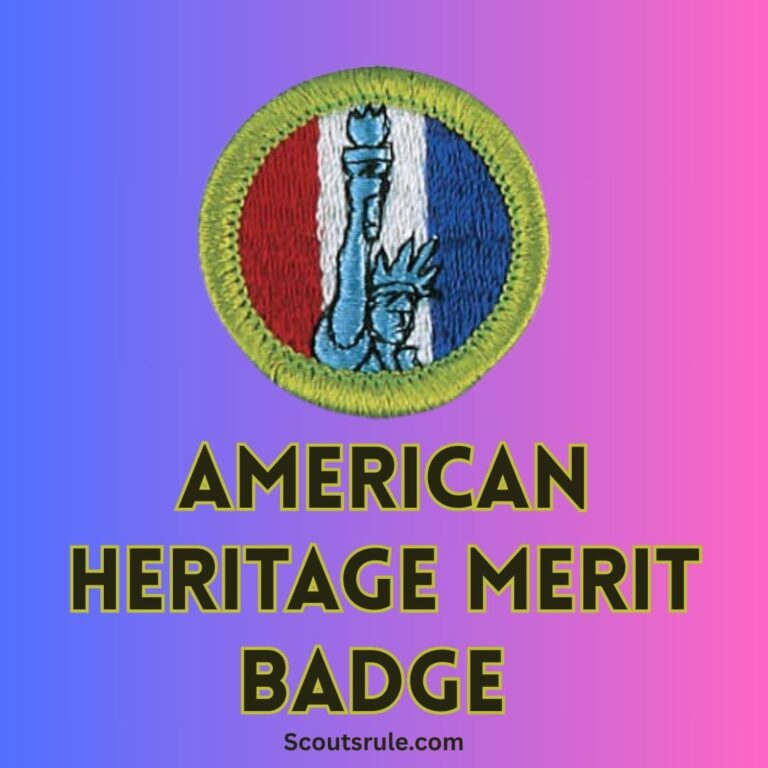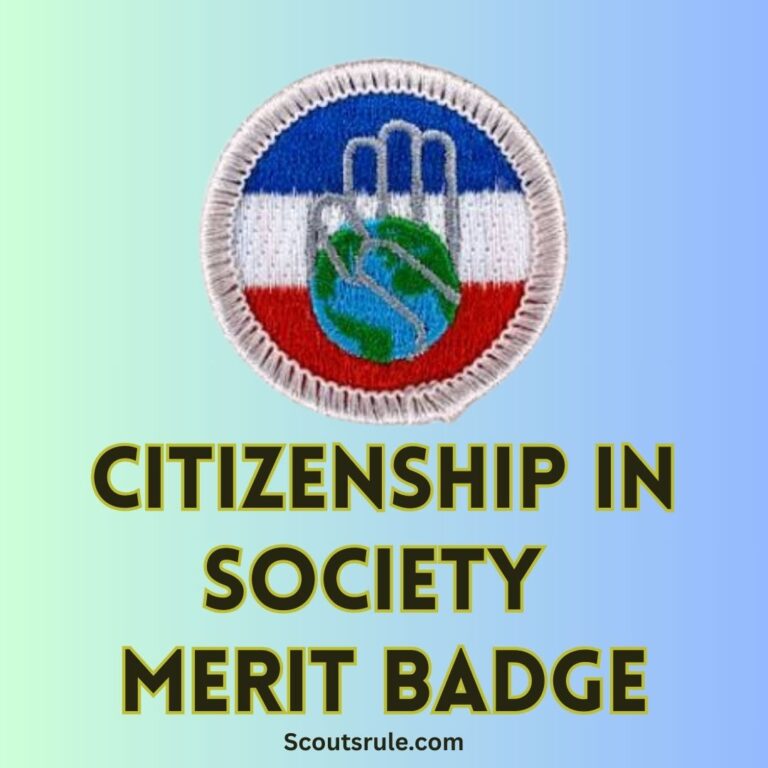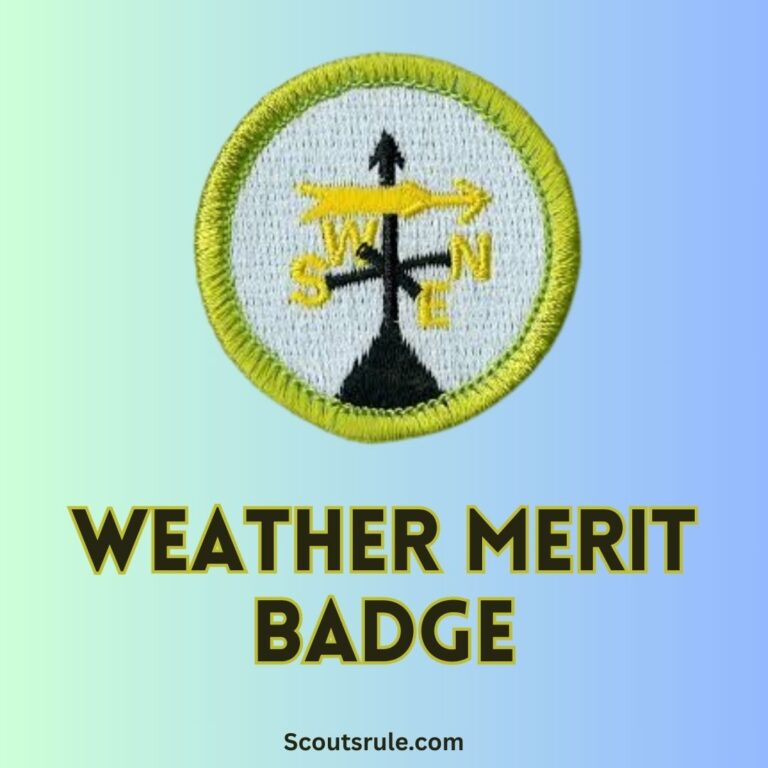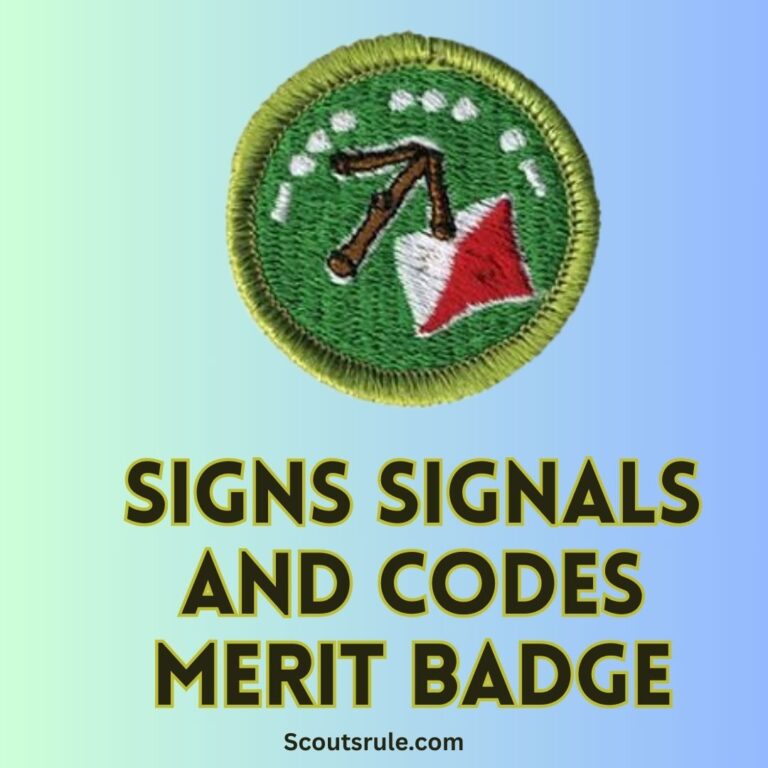
This guide is designed to help you understand and master the concepts, skills, and responsibilities associated with safe driving. It provides an overview of the badge’s purpose and objectives, explains typical requirements in detail, and offers ideas for projects, hands‑on activities, and documentation strategies. Remember that this guide serves as a study aid and supplement to the official Boy Scouts of America merit badge pamphlet. Always work closely with your merit badge counselor and refer to the most current official guidelines to ensure your work meets local council standards.
Post Contents
- Introduction: The Importance of Traffic Safety
- 2. Purpose and Objectives of the Traffic Safety Merit Badge
- 3. Overview of Badge Requirements
- 4. Detailed Guidelines for Each Requirement
- 5. Hands‑On Projects and Field Activities
- 6. Documentation, Record Keeping, and Presentation Strategies
- 7. Additional Tips, Resources, and Career Connections
- Conclusion: Lifelong Lessons in Traffic Safety
Introduction: The Importance of Traffic Safety
Traffic safety is an essential aspect of responsible citizenship and personal well‑being. Every day, countless people rely on motor vehicles for transportation, and understanding the dangers, legal requirements, and best practices is vital to reducing accidents and saving lives. The Traffic Safety Merit Badge helps you learn about these issues in a structured, practical way. By studying the principles of safe driving—from defensive techniques to proper equipment use—you gain the knowledge and skills that will make you a more conscientious driver as well as a potential mentor in your community.
2. Purpose and Objectives of the Traffic Safety Merit Badge
The goals of this merit badge are to:
- Develop Awareness: Understand the common mistakes new drivers make, how distractions and substances like alcohol affect driver performance, and how the design of roads and vehicles can influence safety.
- Enhance Technical Skills: Learn how to properly use safety equipment (such as seat belts) and vehicles’ safety features. Gain hands‑on experience with basic vehicle maintenance checks like tire pressure and signal functionality.
- Improve Defensive Driving Abilities: Study and adopt methods to avoid dangerous situations through measures such as preventing driver fatigue and minimizing distractions.
- Foster Personal and Community Safety: Recognize the legal aspects of driving—such as carrying required documentation and adhering to traffic laws—to ensure safe driving practices and reduce accident risks.
- Encourage Future Responsibility: Build a foundation for responsible driving and appreciate that good driving habits can lead to fewer accidents, lower insurance rates, and even career opportunities in transportation or automotive industries in the future.
By completing this badge, you develop lifelong skills that protect both yourself and others on the road.
3. Overview of Badge Requirements
Though the exact wording can vary from one publication to another, typical requirements for the Traffic Safety Merit Badge include:
3.1 Driver Responsibilities and Common Mistakes
- Requirement Example: Describe the top 10 mistakes that new drivers often make. You should outline errors such as improper use of mirrors, failing to check blind spots, speeding, following too close, distracted driving, improper lane changes, lack of signaling, inadequate scanning of intersections, overconfidence, and insufficient defensive driving techniques.
- Legal Documentation: Name the two items you are required by law to have on your person while operating a vehicle (commonly your driver’s license and vehicle registration or insurance).
3.2 Effects of Alcohol, Drugs, and Distractions
- Substance Effects: Explain how alcohol and other mind-altering substances affect the human body and why they impair driving skills.
- Legal Aspects: Research your state’s legal blood alcohol concentration (BAC) limits and describe the consequences of driving under the influence (both legal penalties and safety risks).
- Distraction Risks: List at least five common distractions (e.g., using a cell phone, eating, adjusting the radio, interacting with passengers, or external visual distractions) and describe strategies to reduce these distractions.
- Additional Context: Consider discussing the heightened risks for new drivers and volunteer drivers — for instance, by describing how fatigue and distractions can compound risk and outlining ways to mitigate these hazards (such as scheduled breaks or pre-planned routes).
3.3 Safety Restraints and Additional Safety Features
- Restraint Demonstration: Demonstrate how to properly wear both lap belts and shoulder belts. Explain the role of seat belts in reducing injuries and how proper usage saves lives.
- Additional Safety Features: Identify at least five additional safety features found in vehicles. These might include:
- Airbags
- Anti-lock Braking Systems (ABS)
- Electronic Stability Control (ESC)
- Traction Control Systems
- Tire Pressure Monitoring Systems (TPMS) For each feature, describe what it does, when it is activated, and how it contributes to vehicle safety.
3.4 Vehicle Operating Features and Maintenance Checks
- Exterior Lights: Using a vehicle that is available to you, demonstrate that all marker lights, parking lights, brake lights, turn signals, and headlights are in proper working condition. Explain:
- The situations when each type of light should be used.
- The locations of the switches and controls for these lights.
- Tire Checks: Demonstrate how to check tire pressure using a gauge, and locate the information for proper tire pressure (usually found on the door jamb or in the vehicle’s manual).
- Explain why proper tire pressure is essential for safe operation and fuel efficiency.
- Tire Tread: Describe what constitutes safe tire tread depth and demonstrate a method (such as the penny test) for checking if your tires have adequate traction.
- Windshield Wipers: Conduct a test (such as a smear-and-clear test) to check if the windshield wiper blades function effectively. Explain instances in which good windshield wiper performance is vital to maintaining safe visibility (e.g., during rainstorms or in snowy conditions).
4. Detailed Guidelines for Each Requirement
Below are specific suggestions for how to approach each section of the badge.
4.1 Requirement 1: Driver Responsibilities and Common Mistakes
- Outline the Top 10 Mistakes: Create a list in your notebook that includes mistakes like:
- Failing to check mirrors and blind spots
- Driving too fast for the road conditions
- Not signaling during lane changes
- Following other vehicles too closely
- Ignoring environmental conditions (rain, fog, ice)
- Distracted driving (using cell phones, eating, etc.)
- Improper use of safety restraints
- Overconfidence and poor anticipation of other drivers’ actions
- Not maintaining a safe distance from hazards
- Failing to follow traffic laws and signals
- Required Documentation: Research local laws to determine the two legally required items (commonly your driver’s license and vehicle registration or proof of insurance) and include a brief description of why those items are important.
4.2 Requirement 2: Effects of Alcohol, Drugs, and Distractions
- Substance Impact: Write about how alcohol slows reaction times, impairs judgment, and affects coordination. Extend this discussion to include the effects of prescription drugs, over-the-counter medications, and illicit substances.
- Legal Research: Use state or local government websites to gather your region’s BAC limits, and summarize the consequences of driving under the influence. Include details on fines, license suspension, or legal penalties.
- Distraction Analysis: List and describe at least five common distractions and provide practical tips on how to minimize them. You might include suggestions such as placing your cell phone out of reach or designating a “passenger” to manage in-car technology.
- Personal Reflection: Write a brief account on why defensive driving and focused concentration are essential for new drivers.
4.3 Requirement 3: Safety Restraints and Additional Safety Features
- Demonstration: Practice properly fastening a lap and shoulder belt on a vehicle and write a step‑by‑step explanation or create a photo sequence that demonstrates correct usage.
- Safety Features Discussion: Look up and list five additional safety features. For each, include:
- A description of what the feature does.
- How and when it operates.
- Its importance in preventing accidents and injuries.
- Practical Examples: If possible, use a real vehicle to show these features in operation (for instance, how the airbag deployment system may work or what indicators the electronic stability control uses).
4.4 Requirement 4: Vehicle Operating Features and Maintenance Checks
- Exterior Light Check: Use a vehicle to practice turning on each type of exterior light. Document where the control switches are located and under what circumstances you would use each kind of light.
- Tire Maintenance: Demonstrate with a tire pressure gauge how to check for proper pressure. Use a simple test (like checking the stamped value on the driver’s door jamb) to validate your readings.
- Tread Depth Inspection: Illustrate a simple method (the penny test is common) for determining tire tread depth and explaining its importance on wet or uneven roads.
- Windshield Wiper Function: Show a demonstration of wiping the windshield, discussing how the wiper blades must clear the glass properly for safe driving in adverse weather conditions.
For each of these items, include photographs or diagrams and a written explanation in your portfolio.
5. Hands‑On Projects and Field Activities
Many of the required skills for the Traffic Safety Merit Badge benefit from hands‑on practice. Consider these projects:
- Simulated Driving Scenarios: Work with a parent, guardian, or experienced driver to simulate and discuss what to do in emergency situations or when encountering hazardous road conditions.
- Safety Equipment Demonstration: With supervision, demonstrate the proper wearing and fitting of a seat belt. Practice explaining its role in protecting both the driver and passengers.
- Interior and Exterior Vehicle Checks: Choose a vehicle to inspect. Check lights, tires, and windows, then record your observations with photographs and detailed notes.
- Research Report: Prepare a written report or infographic that summarizes data regarding the impact of alcohol, distractions, and fatigue on driving ability. Support it with information from reliable sources such as state transportation departments or safety organizations.
- Peer or Community Presentation: Create a short presentation (digital or live) aimed at educating your peers on common mistakes new drivers make and how proper maintenance and safety practices can prevent accidents.
Be sure to document each project step with photographs, a written narrative, and any related sketches or diagrams.
6. Documentation, Record Keeping, and Presentation Strategies
Effective record keeping is a key component of this merit badge:
- Maintain a Detailed Journal: Keep a log of all your practice sessions, research, and discussions with your merit badge counselor and any supervising adults. Include dates, site conditions, and observations gathered from field work.
- Visual Documentation: Use a digital camera or smartphone to capture images of vehicle inspections, safety equipment demonstrations, and simulated rescue scenarios.
- Organize a Final Portfolio: Assemble all written reports, logs, photographs, diagrams, and any video recordings into one organized binder or digital folder. Include a table of contents so that your counselor can review each section.
- Prepare a Final Summary: Create a final presentation—this could be in the form of a slide show, poster, or written report—that synthesizes what you’ve learned about traffic safety, defensive driving, and vehicle maintenance. Reflect on how these skills can enhance your own personal safety and that of others on the road.
7. Additional Tips, Resources, and Career Connections
Additional Tips
- Plan Your Practice Sessions: Schedule regular sessions to practice vehicle inspections, safety checks, and simulated driving scenarios.
- Keep Up with Local Laws: Since traffic laws can vary by state, use local government websites or your vehicle registration office for the latest information on BAC limits, open-container laws, and required documentation.
- Group Study: Discuss these topics with peers or family members who have experience driving or working in automotive maintenance. Their insights can offer practical advice.
- Stay Informed: Read up on defensive driving programs and traffic safety courses offered in your community for further learning.
- Reflect on Real-Life Incidents: Without compromising privacy or safety, review news stories related to traffic accidents and think through how proper application of these safety measures might have prevented them.
Resources
- Official BSA Traffic Safety Merit Badge Pamphlet: Use this as your primary reference for requirements.
- State and Local Transportation Departments: Websites offer current information on legal BAC levels, open-container laws, and safety regulations.
- Online Educational Platforms: Websites like the National Highway Traffic Safety Administration (NHTSA) provide research, guides, and statistics that can enrich your project.
- Driver Safety Videos: Many organizations release free defensive driving videos or tutorials. Check out sources like the American Red Cross or local transportation agencies.
- Local Workshops and Seminars: Attend community workshops focusing on traffic safety, vehicle maintenance, or defensive driving.
Career Connections
Understanding traffic safety is important not just for personal responsibility but also for several career paths:
- Automotive Safety Engineering: Working in research and development for safer vehicle technologies.
- Traffic Management and Urban Planning: Opportunities in designing safer road systems and managing traffic flow.
- Law Enforcement and Public Safety: Roles that ensure traffic laws are enforced and accidents are minimized.
- Driver Education and Training: Teaching new drivers about safe driving practices and vehicle maintenance.
Explore these careers by reading job profiles or interviewing local professionals in these fields.
Conclusion: Lifelong Lessons in Traffic Safety
The Traffic Safety Merit Badge is much more than an academic project—it’s a comprehensive journey that instills a sense of responsibility, critical safety skills, and an informed perspective on vehicle operation and maintenance. By thoroughly studying common driver mistakes, understanding the impact of substances and distractions, properly using safety restraints, and learning about routine vehicle maintenance, you build a foundation that will make you a safer driver and a more responsible member of the community.
Throughout your project, every observation, practice session, and reflective entry reinforces safety protocols that could ultimately save lives. By documenting your journey with detailed journal entries, photographs, diagrams, and a final presentation, you not only meet the merit badge requirements but also create a personal portfolio that reflects your growth, knowledge, and commitment to traffic safety.
May your efforts lead to a lifetime of attentive, responsible driving and may your experience with this merit badge empower you to share these vital lessons with others. Safe driving is everyone’s responsibility—and through the skills you develop here, you become an ambassador for traffic safety in your community.
Happy driving, and may your commitment to safety guide you toward a future of vigilance, skill, and responsible transport!

Hi, Robin here, A former lead Scout and here I share my inspiring stories about USA Scouts, leadership, adventure, how to guides and more.






